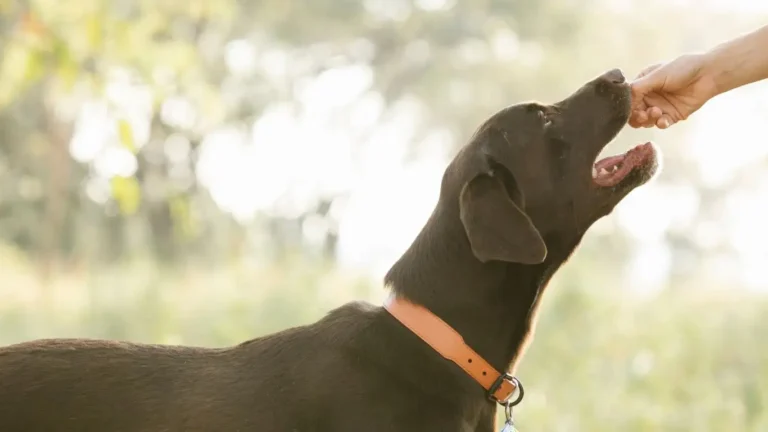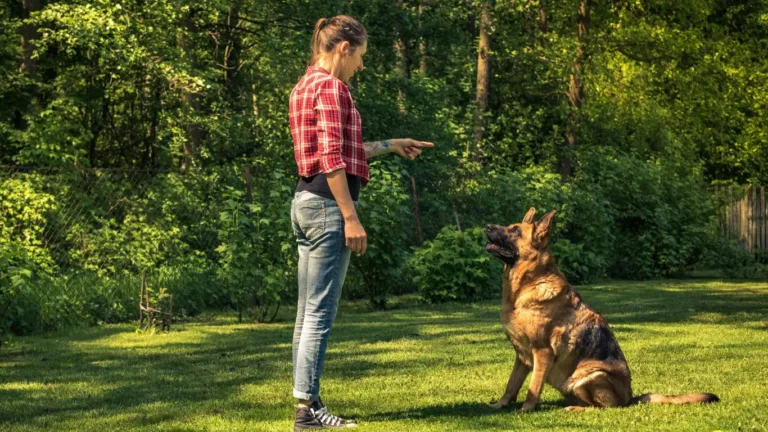How to Train a Dog to Stop Scratching Doors Fast With These Proven Tips
If you’re pulling your hair out over how to train a dog to stop scratching doors, trust me—I’ve been there, more than once. As a vet tech who’s worked with countless dog owners and dealt with every kind of canine quirk, this one comes up a lot. Scratched-up doors are more than just an eyesore—they’re a clear sign your pup is trying to tell you something. Whether it’s separation anxiety, boredom, or a full-blown case of “I-see-a-squirrel-and-I-must-go,” there’s always a reason behind the scratching. So let’s talk real solutions, not just surface-level fixes.
Why Dogs Scratch Doors in the First Place

It’s Not Just About the Door
One thing I’ve learned working in clinics and consulting with pet parents is that dogs rarely do something “just because.” Scratching isn’t random—it’s a message. For example, I once had a sweet Golden Retriever patient named Max who shredded the back door every time his owner left. The poor guy wasn’t trying to destroy anything—he had major separation anxiety. And once we addressed the root cause, guess what? The scratching stopped.
- Anxiety: Especially when you’re leaving, your dog may panic and try to get to you.
- Attention-seeking: Sometimes they’ve figured out, “Hey, this gets a reaction.”
- Boredom: No toys, no exercise, and too much energy = bad combo.
- Territorial behavior: If they hear or smell something outside, they may scratch to “defend” their space.
Signs It’s More Than Just a Bad Habit
If your dog’s also whining, pacing, or drooling before or during the scratching, you’re likely looking at some level of stress or anxiety. And ignoring it won’t make it better. In fact, I’ve seen some dogs scratch down to their claws because their signals weren’t picked up in time.
How to Train a Dog to Stop Scratching Doors—Start with Mindset

Think Beyond Discipline
Let me be totally clear—yelling, scolding, or physically punishing your dog will only make things worse. I know how tempting it is when you come home to a freshly shredded doorframe (been there, trust me), but dogs don’t make the connection between the act and the consequence unless the feedback is immediate—and even then, it often just creates fear.
Instead, we want to reinforce calm, appropriate behavior. That starts with addressing your dog’s emotional and physical needs.
Step-by-Step: Training That Works
Here’s a practical guide I often share with my clients. It’s simple but requires patience and consistency:
- Increase physical exercise: Walks, fetch, tug-of-war—whatever burns energy. A tired dog is a calm dog.
- Provide mental stimulation: Puzzle feeders, lick mats, frozen Kongs. I personally love food puzzles because they keep the brain busy.
- Teach a ‘Place’ command: Show them a comfy bed or mat near the door and reward them for sitting there calmly. This is one of my go-to techniques in behavior plans.
- Use deterrents smartly: If needed, use safe deterrents like sticky strips or pet-safe sprays—but don’t rely solely on them.
- Gradual departure desensitization: Practice leaving and coming back in short intervals to build their confidence.
One of my past clients had a high-strung little terrier who scratched up every exit in the house. What finally worked? A combo of frozen treat toys when she left and gradually increasing alone time. Within a month, the scratching went from daily to almost never.
When It’s Time to Bring in Backup

Veterinary Behaviorists & Trainers Are Lifesavers
Sometimes, despite your best efforts, the scratching just won’t quit. If that’s the case, don’t be afraid to call in a professional. A certified dog trainer or veterinary behaviorist can help you pinpoint exactly what’s triggering your dog and build a step-by-step behavior modification plan. I’ve referred many clients to behavior specialists when we hit a wall, and it’s always worth it.
Remember: this isn’t about punishing your pup—it’s about understanding them. The more you tune into what they’re trying to communicate, the easier it becomes to redirect that energy in a positive direction.
Consistency Is Everything—Seriously

Stick With the Plan
One of the biggest reasons training fails? Inconsistency. I can’t count how many times I’ve seen amazing progress with a dog during clinic visits or one-on-one sessions, only to have the owner accidentally undo everything by switching up the routine or giving mixed signals. Dogs thrive on patterns—they’re little routine addicts. When your reactions vary, they get confused and slip back into old habits like scratching doors.
So whether you’re using a “place” command, treat-dispensing toys, or practicing departure drills—stick with it. Even on the days when you’re exhausted or running late. Especially on those days, actually. Because the moment you slip and react emotionally to a scratched doorframe, your dog might think, “Ah, this works again!”
Pro Tips from a Vet Tech (a.k.a. the Stuff You Don’t Hear Enough)
- Rotate toys and enrichment activities to keep your dog engaged. A bored brain = a destructive brain.
- Use scent work games inside the house to burn off mental energy. Dogs have incredible noses—give them a job!
- Keep a training log. Just a simple notebook or app where you track behavior changes. Patterns will emerge, and you’ll start to notice what’s working (or not).
One of my clients once said, “I don’t think my dog even knows he’s being trained half the time.” And that’s the magic! When training blends into everyday life, it sticks.
Tools & Tech That Can Actually Help

Don’t Sleep on the Power of Gadgets
I used to be pretty old-school when it came to training. But I’ll admit—some of the new gadgets out there really do make life easier. If your dog’s scratching the door while you’re away, the only way to know how often or how intensely it’s happening is to watch them.
- Pet cameras: These are game-changers. You can track when the scratching starts, what triggers it, and even talk to your dog in real-time if needed.
- Automatic treat dispensers: I’ve seen anxious dogs completely chill out when a timed reward drops while their human’s away.
- Calming aids: Think pheromone diffusers, anxiety wraps, or calming music playlists. While not magic bullets, they can seriously help lower baseline anxiety.
I had one patient, a rescue mutt named Luna, who’d panic the second her owner left. We paired a Furbo cam with a treat dispenser and layered in some calming music. Over a few weeks, she learned that door-closing sounds didn’t mean panic—they meant snacks and a nap!
Reinforcement: Catch the Calm Moments

Reward What You Want to See
Here’s something I wish more people knew—you’ve got to reward calm, quiet behavior. Not just the big training wins, but the in-between moments. Like when your dog walks past the door and doesn’t even glance at it? That’s your cue. Toss them a treat or give them some love.
We’re quick to react when dogs do something “bad,” but often overlook the dozens of moments where they’re doing exactly what we want. And those moments? That’s where the real training happens.
Timing Is Everything
When your dog is calm and not scratching, especially during a typical trigger moment (like you picking up your keys), reinforce that behavior. It might feel weird at first—rewarding your dog for literally doing nothing—but that’s exactly the point. Doing nothing is a huge win in dog terms!
- Pick a calm cue like “good quiet” or “relax.”
- Pair it with gentle praise and a small treat.
- Repeat consistently, especially during known triggers like exits or guests arriving.
With one anxious German Shepherd mix I worked with, we practiced this approach daily. Her scratching dropped by 80% in less than two weeks, just by catching and reinforcing her non-reactions. It’s amazing what a little attention to the quiet can do.
Advanced Techniques to Curb Door-Scratching Behavior

Introducing Alternative Behaviors
One effective strategy I’ve employed in my practice is redirecting the scratching behavior to a more acceptable action. For instance, teaching your dog to ring a bell or press a touchpad near the door can serve as a polite request to go outside. This method not only preserves your doors but also empowers your dog with a clear way to communicate their needs. Consistency is key—reward your dog each time they use the new signal, reinforcing the desired behavior.
Utilizing Deterrents Wisely
While positive reinforcement is paramount, sometimes incorporating deterrents can aid in discouraging unwanted behaviors. Pet-safe deterrent sprays with scents that dogs find unappealing can be applied to door areas to make them less enticing for scratching. Additionally, installing protective door covers can prevent damage during the training phase. Remember, these tools should complement, not replace, consistent training and positive reinforcement strategies.
Environmental Enrichment and Mental Stimulation
Often, door-scratching stems from boredom or excess energy. Ensuring your dog receives ample physical exercise and mental stimulation can mitigate this. Interactive toys, puzzle feeders, and regular play sessions can keep your dog engaged and reduce the likelihood of destructive behaviors. In my experience, a well-stimulated dog is a well-behaved dog.
When to Seek Professional Help

Identifying Underlying Issues
If your dog’s door-scratching persists despite consistent training efforts, it may be time to consult a professional. Persistent scratching can be a symptom of deeper issues such as separation anxiety or other behavioral disorders. A certified dog trainer or veterinary behaviorist can assess your dog’s behavior and develop a tailored intervention plan.
Collaborating with Professionals
Working with professionals can provide you with additional tools and techniques to address your dog’s specific needs. They can offer insights into your dog’s behavior, suggest appropriate training methods, and guide you through the process. Remember, seeking help is a proactive step towards ensuring your dog’s well-being and maintaining a harmonious household.
References
- Wag! – How to Train Your Dog to Not Scratch the Door
- dogIDs – How To Stop A Dog From Scratching At The Door
- Your New Door – How To Keep Dog From Scratching Door
- Jax Dog Drop – Scratching at the Door to Come Inside
Disclaimer
The information provided in this article is based on my professional experience as a Veterinary Technician/Nurse specializing in nutrition and behavior. It is intended for educational purposes and should not replace personalized advice from a certified dog trainer or veterinary behaviorist. Always consult with a professional for guidance tailored to your dog’s specific needs.






